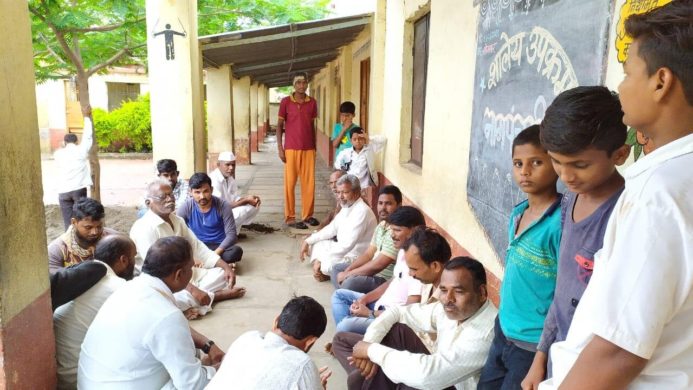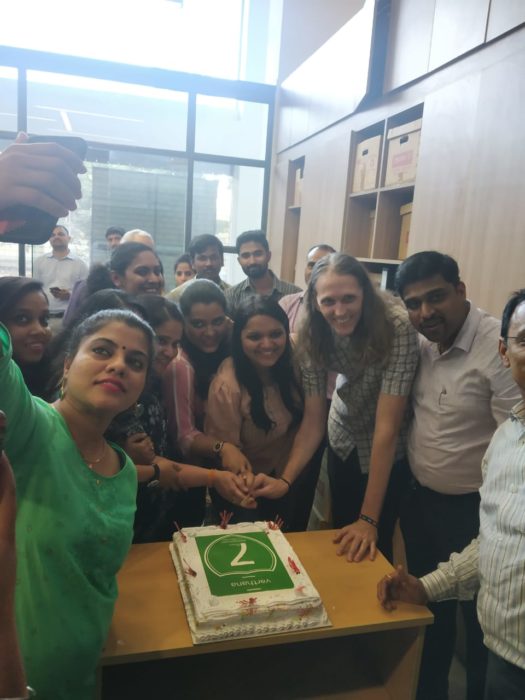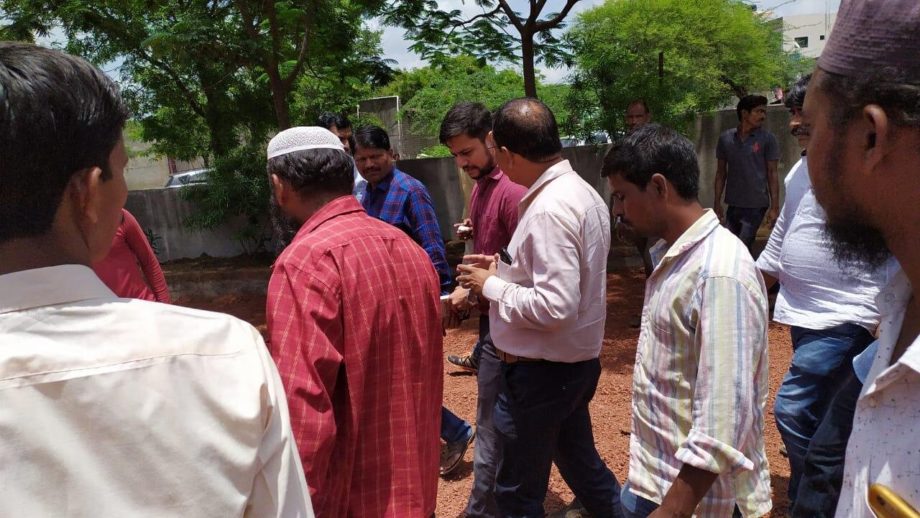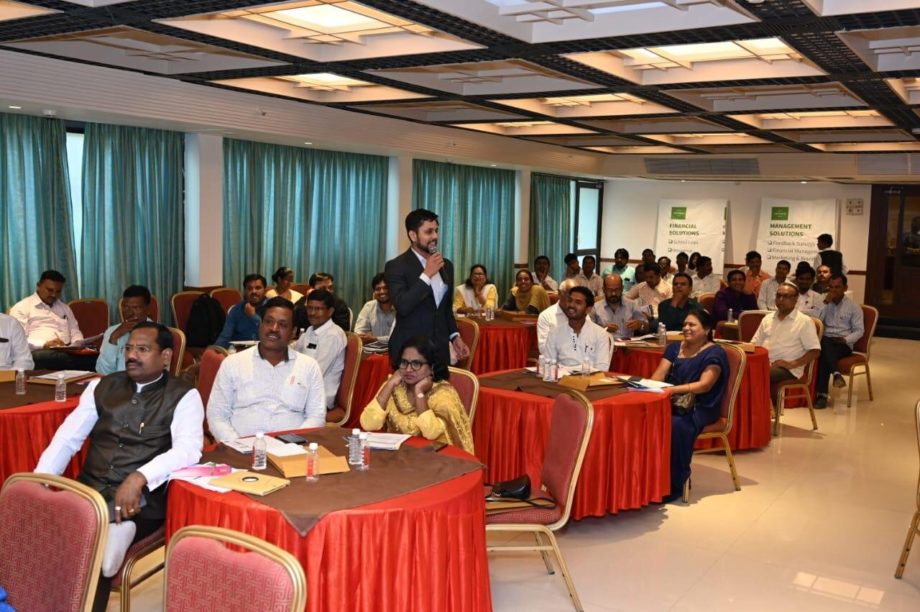
Varthana and the Science of Building a Social Impact Business
By Saumya Saxena, LGT Impact Fellow for Varthana, India
What do you want to learn from this fellowship?
… Andrew Papp asked me during my LGT Impact Fellowship interview. As part of LGT’s matching process, I had been matched with LGT Venture Philanthropy’s portfolio organization Varthana, an organization that aims to transform Affordable Private School (APS) education in India. Andrew was leading the recently set-up management consulting division and was looking to hire a program manager to assist him in developing customized consulting solutions for APS schools.
Having seen the challenges in setting up a social business earlier in my career, I replied “I am looking to learn how to build and scale a sustainable business that solves a social problem.”
What has followed has been an exhilarating journey of learning, unlearning and relearning. In the eight months since that interview, we have successfully managed to set up a model that we believe has tremendous potential in amplifying Varthana’s reach and bringing it closer to fulfilling its vision. A core learning for me has been that there is a science to building a business, especially one with a deeper purpose, which seeks to bring about systemic changes.
In this article, I attempt to break down the science behind building a social impact business, drawing from my observations and experience at Varthana.
1. Think beyond the norm
In 2013, a small team of five was trying to do something unheard of in the banking sector: lending to affordable private schools. By 2020, the team of more than 700 employees at Varthana has successfully lent to more than 4,000 schools, making it an inspiration for the social microfinance sector globally. By challenging the banking status quo, Varthana has impacted the lives of close to 3.5 million children and has helped schools grow exponentially.
To build a social impact business, the first thing to do is to challenge the norm and dare to dream in a world of possibilities.

For the newly set-up management solutions division, the dream was to fundamentally change the way a school’s management makes its decisions, by introducing data and technology into its decision-making process.
When the leadership team introduced me to the concept of management consulting for schools, I was thrilled at the prospect of helping create a new industry.
2. Define your scope
True to its vision statement of transforming affordable private school education in the country, Varthana restricted its lending audience to affordable private schools; it did not lend to high income private schools or universities. This focused approach has been instrumental in the company’s success.
Once you have identified a solution to a problem, the next step is to define the scope and the audience of your solution.
By the time I joined the organization, the management solutions team had already narrowed our product offerings to three categories:
- Feedback Surveys, which involve market research for APS schools to help them understand stakeholder satisfaction levels and their perception in the community
- Marketing Strategy, to help schools identify their value proposition, communication channels and messaging to the community
- Financial Management, aimed at developing budgets, streamlining accounting processes and building capacity for APS schools
Part of my role was to further streamline these products and develop new ones as per the market needs.
3. Understand the market
The founding team of Varthana had more than two decades of experience in the financial sector and, consequently, a deep understanding of the market.
Get on the ground and speak with all stakeholders to get a deeper understanding of the needs of the market.

For the management solutions team, what we lacked in experience, we made up for in our steady resolve to understand the market. In the past three months, our 7-member team met about 300 school leaders to understand their challenges and their take on our solutions.
4. Build a continual feedback loop
Varthana regularly assesses its loan portfolio, its delinquency rates, additional requirements of its customers and ideas of its employees to improve its current product mix, increase customer and employee satisfaction levels, and incorporate additional offerings to its portfolio. The newly set-up teacher training and student loan verticals are testimony to the importance of having a data-driven feedback loop.

Ensure that you hear out all your stakeholders. Continual feedback gives us live perspective on the work we do, the impact that we have while also displaying what can be done better.
Feedback helped us understand that schools were not looking for advice on how to do their marketing but for someone to come do it for them. I remember the joy of taking this feedback and translating it into a product offering and eventually into a live project, where the team is helping a school stand apart from the competition by amplifying its unique positioning through below-the-line marketing techniques.
5. Set up structures and processes
Varthana, now a mid-sized company, houses more than 700 employees in 35 different offices and caters to over 200 cities in India. To efficiently operate at such a massive scale requires setting up structures and processes. It requires productivity management tools and training the staff to use these tools.
An organization that invests in processes invests in its long-term growth.
Recognizing the importance of setting up structures and processes, the management solutions developed an in-house customer relationship management tool to track its sales, a tracker for project delivery, a knowledge management tool. We complemented these tools by processes: bringing in accountability and ownership by designating a person for each tool, sharing insights of the past week and the plan for the week ahead in a weekly team meeting.
6. Use rejection as a learning tool
Between the first round of funding and the next, Varthana was rejected by over 300 investors. During one of our conversations, one of the founders of Varthana mentioned how the organization still managed to be successful because they were not obsessed with perfection. They had learned from every meeting and worked on building a stronger case for the next. He spoke about how in the pursuit of perfection, we often lose out on actually accomplishing things.
Go to market as soon as you have the draft of your MVP ready. Be open to rejection and use that as feedback to improve your product/service.
In the early days of my fellowship, when we had not sold a single management consulting solution for a month, I suggested we took another look at our product offerings or shift our target audience. At that point, one of my colleagues introduced me to the term “navel gazing”. The term, defined as “self-indulgent or excessive contemplation of oneself or a single issue at the expense of a wider view” implied how in the process of chasing sales, I had lost sight of what we were trying to accomplish.
Our work with affordable private school leaders has increasingly helped me relate with Billy Beane from the movie ‘Moneyball’: trying to emphasize the importance of data and technology in a world alien to it.
While we have realized that all schools might not be the audience for our solutions, we have found that there exists a niche set of young school leaders who value data-driven insights and want to invest in their school’s long-term growth.
7. Measure your impact
How we measure impact defines our business. One way to see Varthana’s impact is by the number of schools it reaches, its loan portfolio and its financial return. Another way is to look at testimonials of students, who can now play their favourite games in the playground, have access to libraries, labs and other state-of-the-art infrastructure in their schools.
Measuring impact helps us keep sight of our goal of making a meaningful difference in the world.
In our first real attempt at going to the market, it is important to look back and analyse the impact we have had through our work. So far, we have successfully been able to lay emphasis on the use of data to drive decision making in about two dozen schools.
The steps mentioned above are not exhaustive and exclude the steps that were taken before I had joined the fellowship, such as building a team, managing its finances, raising funds, etc.
Now, every time I am asked what I have learned from the fellowship, I feel proud to answer: “I have learned how to build and scale a sustainable business that solves a social problem.”

This is a very inspiring and well done testimonial. Very compelling for social impact drivers and richly educative.
This approach can work on scaling many thriving businesses.
Well done ✔🌞